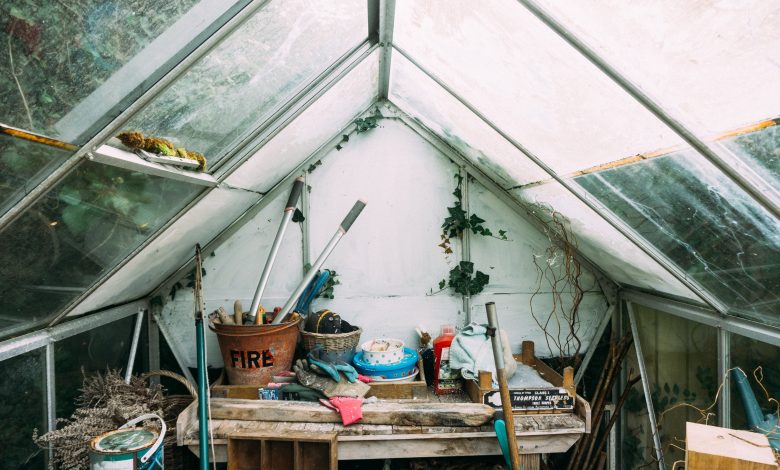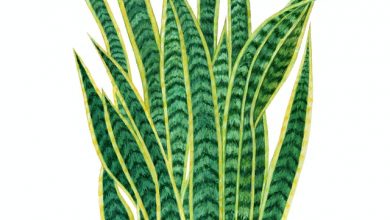Basic Tools for the Beginning Gardener

When you’re beginning to build the perfect garden that you’ve created in your mind, you’ll certainly need a little bit of help. Depending on where you live and what kind of land you’re working with (perhaps how the last owner left the space), you might have a handful of obstacles awaiting you.
Never fear; gardens are a labor of love and they are worth the extra work. If you want to make the task more manageable, though, there are a variety of garden tools that will assist you in your journey. These tools are some must-haves for your beginning gardening arsenal.
Shovel
Some gardeners might think this is an obvious tool, but it’s surprising just how many people are working with the wrong kind of design! Shovels will make gardening easier on so many levels, so long as you’re working with one that doesn’t actually make your labor more intensive.
Keep in mind that the best shovel for any gardening job is one that has an angled blade. Don’t settle for the shovel you use in the snow or one that’s made of cheap plastic. Chances are, you’re going to be using your shovel a lot in the garden, and you don’t want to be prone to muscle soreness and blisters after the first day.
Look for a shovel that is the right height for you and which is made of a strong metal. Additionally, ensure that the shovel’s blade is attached fairly high up on the handle. Many shovels have a junction that is too far down the handle and it makes it easier for them to break off.
Tip: Sharpen your shovel every season to get the most out of it. You’ll be amazed at how much easier work becomes.

Garden Spade
Another must-have tool for your garden is the spade. Some gardeners assume that these are interchangeable with shovels, but it’s important to understand the differences.
Spades, in comparison to shovels, are a lot flatter. The blade is squared-off around the edges and is much more helpful when you’re trying to make direct cuts in your grass and plant beds. Spades are generally seen with shorter handles as well since they are often used with some force.
You’ll need a spade for creating clean lines in your garden designs, and for cutting up sod as well. Not only is it a great help in your garden, but you can also keep it around in the winter if ice ever builds up.
To get the most out of your spade, choose one that has a stainless-steel blade; this material will not rust as quickly as others. Similar to the shovel, you’ll want to make sure the blade has a strong grip to the handle – those with a rivet often break faster.
Trowel
The trowel is like the miniature shovel that you cannot go without. They have a cupped blade, tapered tips, and are very sturdy because of their smaller size. In some designs, trowels have serrated edges that allow them to break through tough roots and stubborn soil materials like clay.
Trowels are perfect for the smaller projects that you’ll likely find yourself doing on your hands and knees. You’ll love this tool if you need to remove shallow roots, or if you’re planting bulbs and seedlings.
Even if you already have a shovel or spade, they won’t be able to do the precise work of a trowel. There is a wide range of options available these days, so you’ll want to actually hold the trowels in your hand to see which one you like the best.
If you’re looking for comfort during your gardening, you might consider a trowel with a rubber handle instead of wood or metal. Similarly, you can compare the weight of the trowels available; if it’s too heavy or long, you’ll have a harder time maneuvering it.
Gloves
The truth is that your best gardening will be done when you’re wearing a pair of garden gloves that are comfortable and build to protect. Garden gloves are incredibly necessary for a gardener’s collection of tools; they will protect you from all kinds of injuries and allow you to work for as long as you want.
Depending on the shape and material of your gloves, you’ll be able to do a range of tasks. For instance, a pair of long gloves that cover your wrist and forearm are ideal for handling larger or thornier plants.
Gloves are a huge help if you’re doing high-intensity work, such as shoveling, sanding, or sawing. If you do a wide range of tasks in your garden, consider getting a few different pairs that are ideal for different jobs.
When it comes to the material, it’s up to the gardener. Leather and cotton gloves will protect you from blisters, which can halt your projects altogether. Latex and rubber gloves will keep your hands dry on those days when you’re handling wet soil or gardening in the rain. For extra protection, choose a pair with padding on the palms and knuckles.
Tip: Try on all of the pairs you want before making a selection. There’s nothing wrong with getting a few different pairs so you always have some on-hand, and to always have the right style for the job.

Garden Rake
If you like your soil and mulch to sit just right, then a garden rake is definitely a must-have. Not only will a garden rake help you smooth out your topsoils and finishing touches, it will also help to stir up clumps of soil and debris.
If you want something to really smooth out your look, simply flip the rake over and use the smooth side to slide along the surface.
Alternatively, a rake is also a must-have in the fall season. Collecting the leaves, twigs, and debris that fall in the autumn is important for your garden, since leaving all of this mess can cause disaster in the summer.
Lots of little pests like aphids enjoy overwintering in leftover yard debris. You might find yourself with some unwanted visitors in the spring if you haven’t raked up the mess.
Tip: When choosing a rake, try to look for a material that’s lighter, such as aluminum. Heavy rakes are certainly sturdy but they can make it harder to slide lightly along surfaces.
Kneelers
While gardening is certainly a labor of love, that doesn’t mean that you have to come into the house feeling bruised and battered. Kneelers are a wonderful invention that are well-suited to any gardener who often finds themselves in painful positions.
Kneelers come in all kinds of shapes and sizes now, catering to gardener’s specific needs and ailments. In some cases, it’s a simple as a cushion that you kneel on, while others come with straps, wheels, and even metal frames.
Depending on your abilities, there is certainly a kneeler out there for you. Gardeners who have a hard time getting around might choose a seated option, with wheels to get around and pads to protect their clothing.
A kneeler is a must-have since it makes the job easier and allows you to do it more often. If you’re shopping for a kneeler, consider purchasing one that could be useful in a few years’ time as well.
Additionally, some kneelers fold up and make it easy to store them, which is ideal if you’ve got limited storage or a packed shed.

Watering Cans
Every gardener should have a watering can in their collection of tools. The style of the watering can has hardly wavered over the centuries, and for good reason: It’s handy, and it works!
Not only are watering cans perfect for getting the right amount of water on all of your plants, but they also make easy garden décor when they’re not being used. Try to find one that has measurement markings on the side so that you can easily mix the right amount of water and fertilizer.
In addition to being one of the most important tools in your garden, water cans can also help to make your garden more eco-friendly. Watering with a hose is certainly convenient, but we often use more water than required, which is bad for the planet.
Using a watering can, and additionally, a rain barrel, helps us to be more conscious of how much water we’re using. If your watering can breaks for whatever reason, you might also consider turning it into a cute planter instead of sending it to the dump.
Tip: Purchase a can that is going to last you a long time. Try choosing something outside the realm of plastic, and make sure it gets put away in the winter to avoid cracking.

Wheelbarrow
Whether you’re hauling in stone for a path or transporting large, heavy plants, the wheelbarrow is your friend. You’ll want to look for one with high sides so that nothing spills out. Similarly, you’ll want to look for a wheelbarrow that reflects the size of your garden and the paths you use.
While some of these transporters are enormous and ideal for heavy lifting, you may only need a smaller version for maneuvering in your space.
If you have a hard time handling this kind of garden tool, there are newer models that come with two wheels instead of one. This makes the balancing act much easier and avoids spilling the contents all over your yard.
Tip: Ask for a wheelbarrow with pneumatic tires. These are tires that will not go flat, which means you’ll be able to use it for much longer without any issues.
Garden Fork
A garden fork is a must-have tool for your garden since it takes care of the jobs that your shovels and trowels can’t do.
A garden fork is ideal for working with the soil in your garden, whether you’re aerating it, turning it, looking for grubs, or planting new seedlings. This is because of the way the soil moves through the fork instead of collecting on it.
If you’re going to be mixing fertilizers or compost into the existing soil, this tool will help to make sure everything is mixed thoroughly before plants move in.
Additionally, if you know you’ve got a lot of small roots or rocks to pull out of the soil, the garden fork is perfect for extracting them without disturbing the area too much.
Like most garden tools, the garden fork comes in a lot of different designs. You’ll want something with strong tines that won’t bend and a comfortable handle that won’t cause blisters.

Pruners
Pruners are a handy little tool for any gardener to have, especially if you’ve already got a well-established garden. Pruners are great for maintaining a well-manicured garden, and they will help you to cut back vines, weeds, and bushes that have become a little out of control.
Pruners are also ideal for those gardeners who have shape preferences; in some instances, smaller plants and bushes can be pruned to have a distinct look. If you’ve got lots of plants with stems no bigger than 3/4 of a inch, then a pruner is ideal.
If you’ve got bigger stems than this, you might consider a lopper for the job instead. Working with anything too large in diameter runs the risk of breaking your pruners.
Garden Trug
When it comes to weeding, digging and pulling, you’ll need something to drop all your debris into. A garden trug is perhaps a fancy name for any type of container, but it’s something that you can use over and over to make transporting items easier.
The original design of the trug is more like a wooden basket, in which gardeners would place their collected vegetables and fruits for harvest. However, new designs have come about in recent years.
In some designs, garden trugs are made with durable materials, ergonomic handles, and thoughtful sizes. This way, gardeners aren’t forcing themselves to lift heavy containers that are far too big or too awkward to handle.
Once the trug is full of soil, weeds, twigs or other greenery, gardeners can pile it into their garden waste bin or compost bin.
Sheers
Sheers are similar to pruners, but they are a larger size and are able to cover a larger area more quickly. While prunes should be used for individual plants and smaller stems, sheers can take over when it’s time to cut back large bushes and overgrown vines.
Similar to other must-have garden tools, sheers come in a range of materials and sizes. You’ll want to go with a stainless-steel pair that won’t rust, as well as a pair that feels light and maneuverable in your hands.
Sheers should also be sharpened each year to ensure they’re doing their best work. Use this item for cutting back hedges and long grasses, or even for dead-heading multiple flowers at once.
Post Hole Digger
As one of the more modern garden tools, the post hole digger is perfect for a gardener who wants to save on time. Post hole diggers come in all kinds of shapes and sizes, with the smaller, individual options being great for gardeners.
This tool makes hole-digging easy; the spiral shape of the digger can remove stubborn weeds that are blocking your path. In no time at all gardeners can have spaced-out, perfectly dug holes that are ready for planting.
If you’re one of those gardeners who like to do the hard work with your hands, then sticking to the classic shovel and spade is just as acceptable.

All of these tools are built to make your gardening journey easier; if you are missing a few of these tools, be sure to add them to your collection. To ensure that they can serve you for many years, be sure to store them in a safe, dry place over the winter.
Don’t forget to sharpen and clean them as often as necessary. When they are taken care of, these tools should last you many great years in your garden space.



